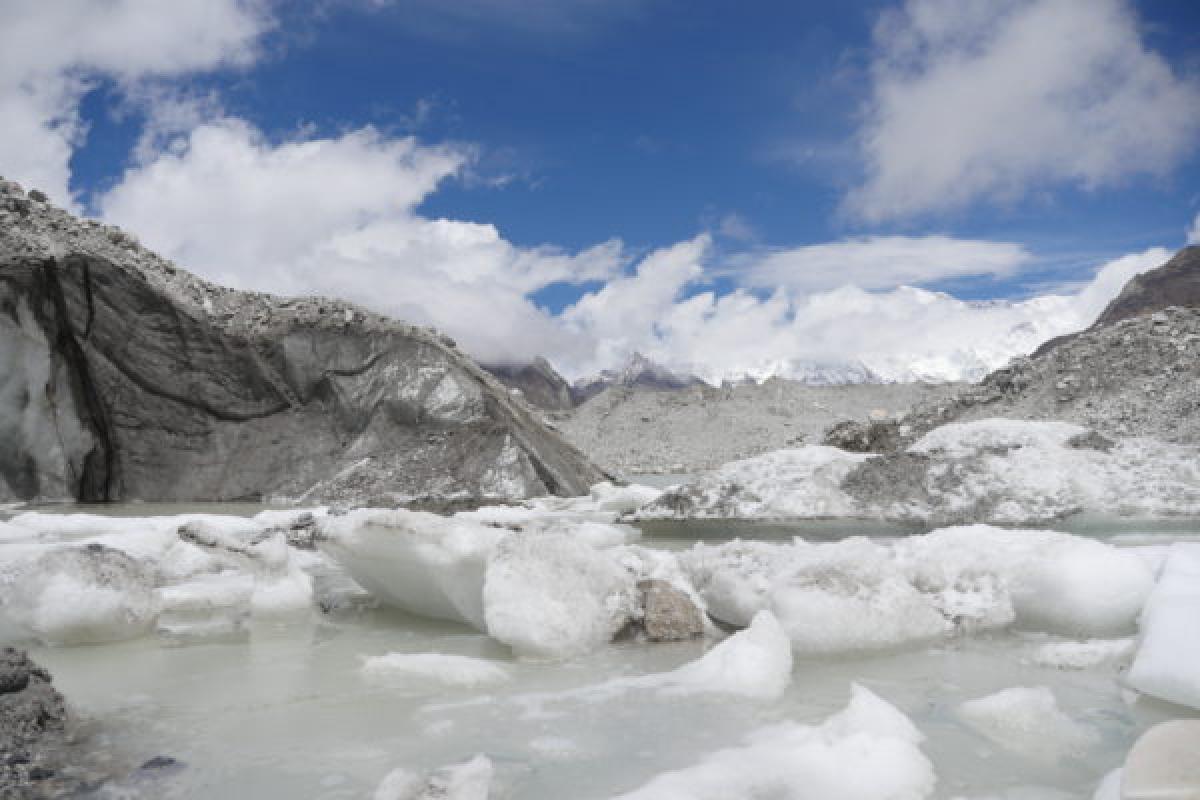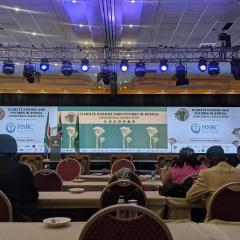
Using Swimming Robots to Warn Villages of Himalayan Tsunamis
September 12th, 2016

Cross-posted from National Geographic Explorers Journal.
By Patrick Meier
Climate change is having a devastating impact on the Himalaya. On the Ngozumpa glacier, one of the largest and longest in the region, hundreds of supraglacial lakes dot the glacier surface. One lake in particular is known for its continuous volume purges on an annual basis. Near the start of the monsoon this summer, in less than 48 hours, it loses enough water to fill over 40 Olympic-sized swimming pools. To make matters worse, these glacial lakes act like cancers: they consume Himalayan glaciers from the inside out, making some of them melt twice as fast. As a result, villages down-valley from these glacial lakes are becoming increasingly prone to violent flash floods, which locals call Himalayan Tsunamis.
To provide early warnings of these flash floods requires that we collect a lot more geophysical and hydrologic information on these glacial lakes. So scientists like Ulyana (co-author) are racing to understand exactly how these glacial lakes form and grow, and how they’re connected to each other through seemingly secret subterranean channels. We need to know how deep and steep these lakes are, what the lake floors look like and of what materials they are composed (e.g., mud, rock, bare ice).
Ulyana, her colleagues and a small local team of Sherpa have recently started using autonomous swimming robots to automatically map lake floors and look for cracks that may trigger mountain tsunamis. Using robotics to do this is both faster and more accurate than having humans take the measurements. What’s more, robots are significantly safer. Indeed, even getting near these lakes (let alone in them!) is dangerous enough due to unpredictable collapses of ice called calving and large boulders rolling off of surrounding ice cliffs and into the lakes below. Just imagine being on a small inflatable boat floating on ice-cold water when one of those icefalls happen.
We (Ulyana and Patrick) are actively looking to utilize diving robots as well—specifically the one in the video footage below. This OpenROV Trident robot will enable us to get to the bottom of these glacial lakes to identify deepening ‘hotspots’ before they’re visible from the lake’s surface or from the air. Our plan next year is to pool our efforts, bringing diving, swimming and flying robots to Nepal so we can train our partners—Sherpas and local engineers—on how to use these robotic solutions to essentially take the ‘pulse’ of the changing Himalaya. This way they’ll be able to educate as well as warn nearby villages before the next mountain floods hit.
We plan to integrate these efforts with WeRobotics (co-founded by co-author Patrick) and in particular with the local robotics lab that WeRobotics is already setting up in Kathmandu. This lab has a number of flying robots and trained Nepali engineers. To learn more about how these flying robots are being used in Nepal, check out the pictures here.
We’ll soon be adding diving robots to the robotic lab’s portfolio in Nepal thanks to WeRobotics’s partnership with OpenROV. What’s more, all WeRobotics labs have an expressed goal of spinning off local businesses that offer robotics as services. Thus, the robotics start-up that spins off from our lab in Nepal will offer a range of mapping services using both flying and diving robots. As such, we want to create local jobs that use robotics (jobs that local partners want!) so that our Nepali friends can make a career out of saving their beautiful mountains.
Please contact us at WeRobotics if you’d like to get involved or support in other ways!
Recent Articles

